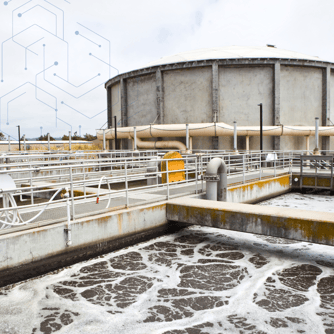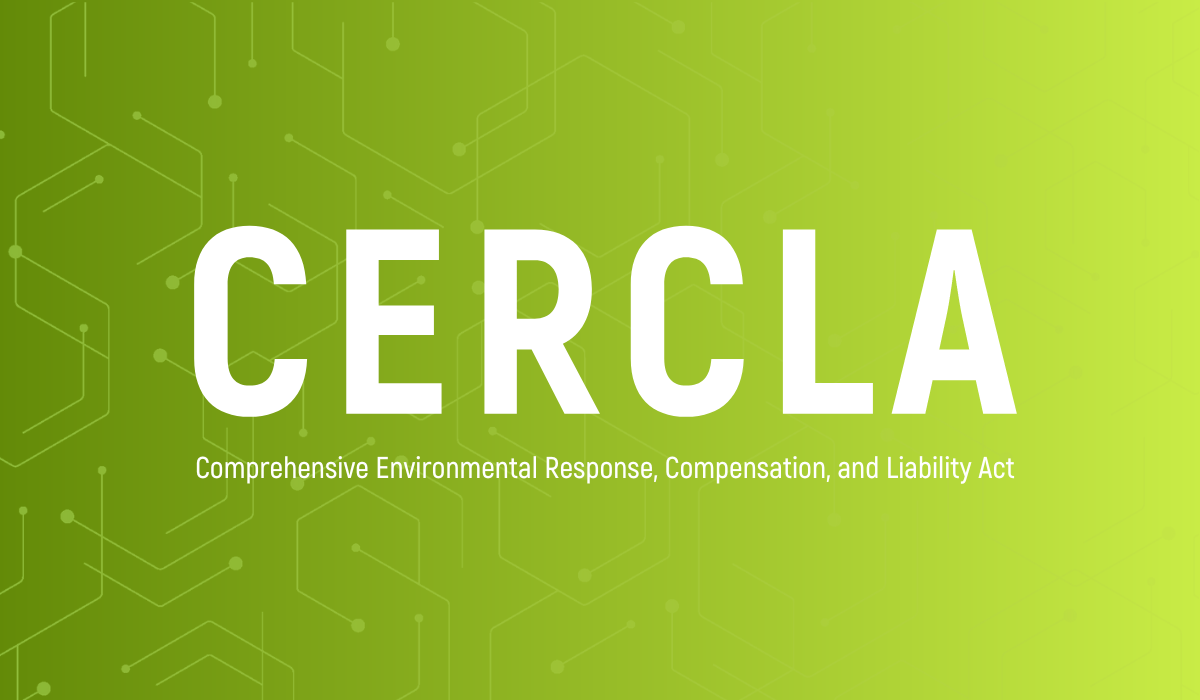What Happens Once PFOA and PFOS are Designated Hazardous Under CERCLA?
In this edition of PFAS Matters, we focus on an U.S. EPA action that has significant ramifications for a wide range of Pace® customers: the designation of PFOA and PFOS as hazardous substances under the Comprehensive Environmental Response, Compensation, and Liability Act, otherwise known as CERCLA.
Want PFAS Matters delivered to your inbox? Subscribe here.
Why CERCLA/Superfund Matters
Once a substance is designated hazardous under CERCLA, facilities will be required to report on releases that meet or exceed the reportable quantity assigned to these substances. Under the proposed rule, this would be a release of one pound or more in a 24-hour period.
CERCLA already grants the EPA the authority to respond directly, e.g., issue cleanup orders, in instances where PFOA or PFOS are released and there is an imminent threat to the public or the environment. The new designation of PFOA and PFOS as hazardous substances takes this authority a step further in that the EPA no longer needs to show an immediate threat. As hazardous substances, that threat is assumed.
CERCLA also grants the EPA to address existing contamination, again, without the need to demonstrate a threat to people or the environment. It’s this application of the law that has many organizations re-evaluating potential liabilities. Remember, PFAS do not break down naturally or easily, so businesses can be held accountable for contamination that occurred years ago. Cases that were closed years ago may be reopened. Property owners may even be on the hook for contamination they didn’t cause if the site is designated a Superfund* site.
*Superfund is the informal name given to sites the EPA has targeted for assessment and possible remediation.
Who is Impacted?
In the proposed ruling, the EPA breaks down the types of businesses impacted into 5 major categories:
- PFOA and/or PFOS manufacturers (including importers and importers of articles)
- PFOA and/or PFOS processors
- Manufacturers of products containing PFOA and/or PFOS
- Downstream product manufacturers and users of PFOA and/or PFOS products
- Waste management and wastewater treatment facilities.
In other words, this ruling covers far more than just the manufacturers and processors of PFOA and PFOS. In the proposed rule, the EPA further lists several business types that could be impacted:
- Aviation operations
- Carpet manufacturers
- Car washes
- Chemical manufacturing
- Chrome electroplating, anodizing, and etching services
- Coatings, paints, and varnish manufacturers
- Firefighting foam manufacturers
- Landfills
- Medical Devices
- Municipal fire departments and firefighting training centers, including Federal agencies that use, trained with, and tested firefighting foams
- Paper mills
- Pesticides and Insecticides
- Petroleum and coal product manufacturing
- Petroleum refineries and terminals
- Photographic film manufacturers
- Polish, wax, and cleaning product manufacturers
- Polymer manufacturers
- Printing facilities where inks are used in photolithography
- Textile mills (textiles and upholstery)
- Waste management and remediation services
- Wastewater treatment plants.
Where Are We in the Process?
On August 26, the EPA issued a pre-publication of the proposed rule. The proposed rule was published in the federal register on September 6, triggering a 60-day comment period, which has now closed. Per the EPA’s 2021-2024 Strategic Roadmap, the agency intends to finalize the designation of PFOA and PFOS as hazardous substances under CERCLA in the summer of 2023.
An Economically Significant Action
There is a speedbump on the road to implementation, however. The EPA claims that Congress granted the agency the authority, under CERCLA Section 102(a), to designate substances as hazardous without regard for economic impact. Nevertheless, the Office of Management and Budget (OMB) designated the ruling as economically significant, i.e., having an economic impact of $100M or more, and required the EPA to publish a Regulatory Impact Analysis (RIA), essentially a cost/benefit analysis, before the rule can be finalized.
The EPA published an Economic Assessment of the Potential Costs and Other Impacts of the Proposed Rulemaking to Designate Perfluorooctanoic Acid and Perfluorooctanesulfonic Acid as Hazardous Substances. This document focuses on the cost of reporting but does not estimate cleanup costs, so the analysis may fall short of the RIA requirement.
Opinion: EPA’s Superfund Program May Get New Life
According to legal experts like JDSupra, once PFOA and PFOS are declared hazardous substances under CERCLA, the EPA’s Superfund program may gain new life and trigger a deluge of other actions.

“Because these substances are ubiquitous, if and when finalized, the proposed rule could breathe new life into the Superfund program, unleash a deluge of government enforcement and cleanup actions, citizen suits brought by nongovernmental organizations, and private party cost recovery claims. Further, parties could potentially become subjected to unforeseen contractual indemnity claims, depending upon drafting techniques in merger, acquisition, or similar documents. The proposed rulemaking also could potentially reopen sites that parties have understood to have been closed for many years.”
Does Your Liability Insurance Cover PFAS Remediation and Litigation?
With the threat of being listed as a Superfund site hanging over them, companies and property owners are looking for ways to mitigate their risks, cover the costs of remediation, and settle claims. Pace® is not involved in the legal side of this debate, but we have been keeping an eye on what the experts are telling their clients. As this JDSupra article explains, insurance may provide some relief, particularly older insurance policies that lack PFAS and pollution-related exclusions.
The Superfund Process
As mentioned already, the agency intends to finalize the designation of PFOA and PFOS as hazardous substances under CERCLA in the summer of 2023. Once that happens, those impacted by the ruling will be on high alert. However, like everything else the EPA does, there is a process to designating a site a Superfund site. According to the EPA, the process starts with a site assessment to determine the level of danger the contamination presents to the public and the environment. If cleanup is determined to be warranted, the site will be included on the National Priorities List and prioritized for cleanup.
Learn more about the Superfund process.
How Pace® Can Help
Pace® provides PFAS testing services that cover both types of scenarios. In an emergency that requires a prompt response, e.g., a chemical spill or the release of AFFF containing PFAS, our rapid response team can provide expedited testing services.
For organizations concerned about liabilities stemming from long-term releases of PFAS, Pace® provides PFAS testing services across a wide range of matrices, including drinking water, wastewater, stormwater, groundwater, surface water, soil & sediment, stack emissions, landfill, fluorinated plastics, and biota. These tests can help you assess your potential liability and start risk mitigation planning while you still have some breathing room.
Once the rule goes into effect, the EPA will test sites suspected of PFAS contamination. While the EPA uses highly reliable labs (including our own), Pace® can provide secondary confirmation of the EPA’s results.
Visit PFAS.com for more details on our test methods and services. If you have questions, we’re here to help. Just reach out to our emerging contaminants directly.




